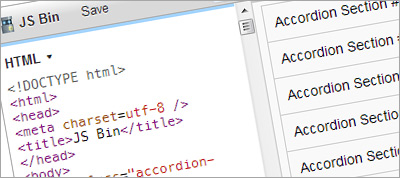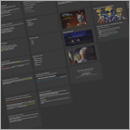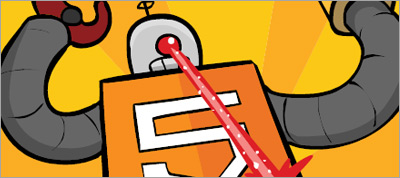All you need to know about CSS Transitions
Alex MacCaw
Alex Maccaw will tell you everything (seriously) you need to know about CSS Transitions. An excellent, in-depth article with quite a few advanced tips.
Dear friends, just a couple of hours ago I’ve launched a CSS Weekly Facebook page for all of you who want to receive more frequent (than weekly) updates. You actually have once-in-a-lifetime opportunity to be one of the first people who like the page.
P.S. The cover image is the glimpse of the upcoming website and newsletter redesign. I hope you’ll like it.

Alex Maccaw will tell you everything (seriously) you need to know about CSS Transitions. An excellent, in-depth article with quite a few advanced tips.

Louis Lazaris shows how you can use straight CSS3 and HTML form elements to replace components written in JavaScript.

Dale Sande proposes the inside-out approach to structuring CSS (or rather Sass) files. It is based on three principles: code the element, create the module and assemble the layout. Give it a shot, it will most likely help you build scalable UIs and make your work a bit easier.

Merging all stylesheets together into a single download is, according to Andy Davies, essentially better than conditional loading. Therefore, don’t load stylesheets conditionally.
Learn how to create a very simple diagonal thumbnails gallery using CSS3 2D-transforms and pseudo elements to display diamond-shaped elements with a background image.
A very well rounded article by Jake Bresnehan that will certainly help you land your dream job.
Andi Smith proposes the solution to a very particular problem that can occur when using media queries in a grid system. Unfortunately, until browser vendors decide to implement solution like this, you’ll have to use JavaScript to solve this problem.

Flowtime.js is a framework for building slick HTML presentations (and even one-page websites). Its real beauty is that it takes care of all the hard parts (like transitions, navigation, overviews etc.), but it lets you easily adjust the design to your liking. It basically offers everything you need to create an excellent presentation. Give it a shot.

Getting into front-end development can be quite difficult nowadays and finding a good resource that explains basic HTML and CSS concepts is probably even more difficult.
That’s exactly the reason why you’ll find Illustrated Guide to Front-End Development by Brian Franco useful.
The book is written for beginners, for people who would like to get into web development but are not sure what their first steps should be.
A casual style and excessive (in a good way) use of humor make for very pleasant reading experience while the book explains basic concepts followed with simple step by step practices to get you as smooth as possible into the basics of front-end development.
As a loyal CSS Weekly reader you’re entitled to 50% discount on the book. Just use the following coupon:CSS50OFF. Please note that the coupon is only valid if you use the Paypal payment option. Also, the coupon will expire at the end of January so make sure you use it on time.
Happy coding
Zoran Jambor